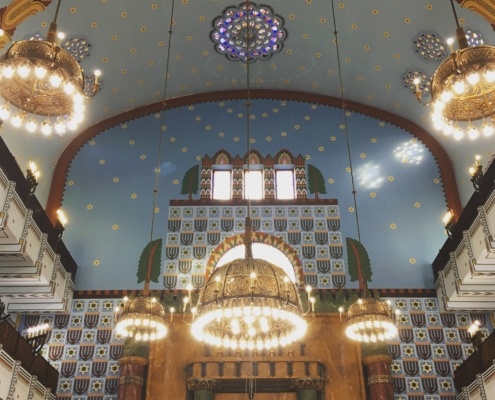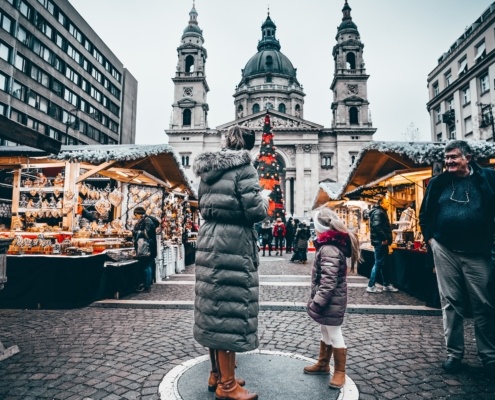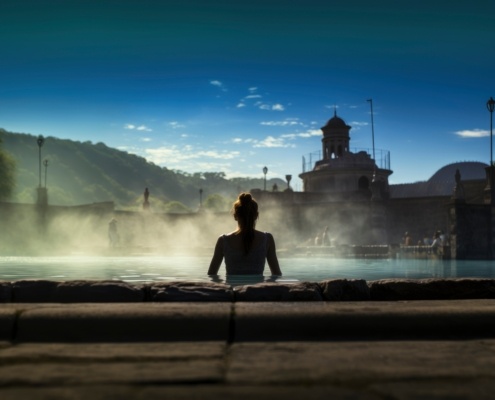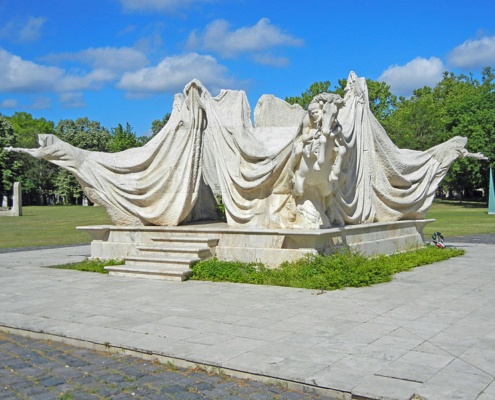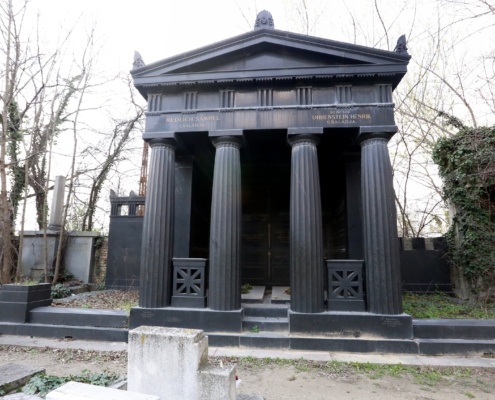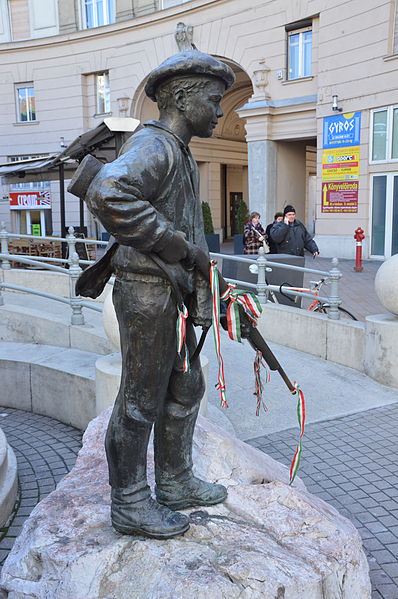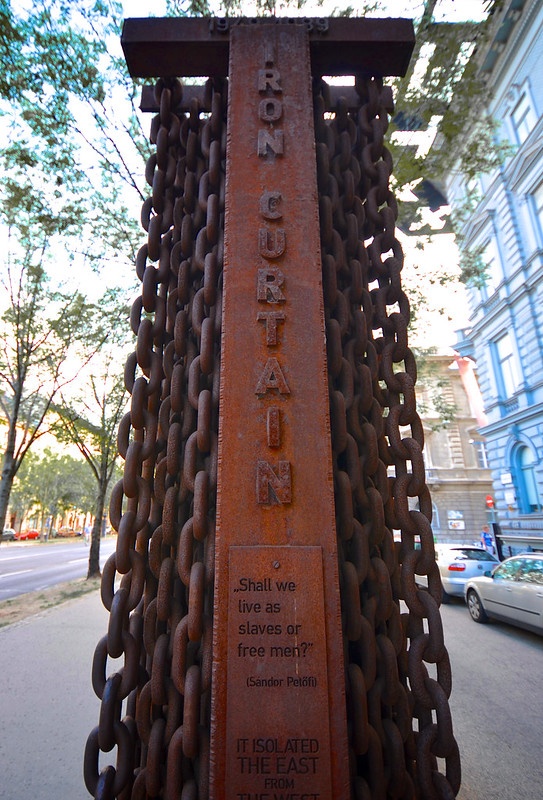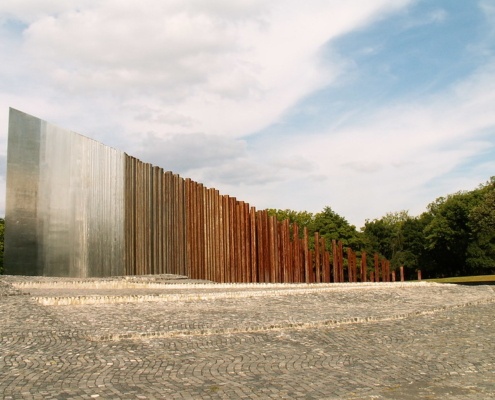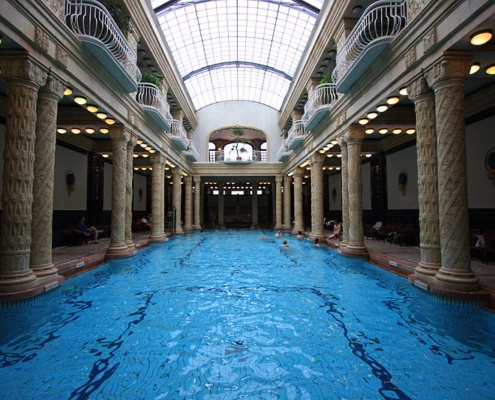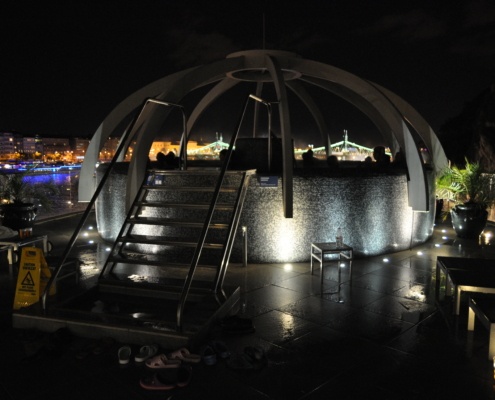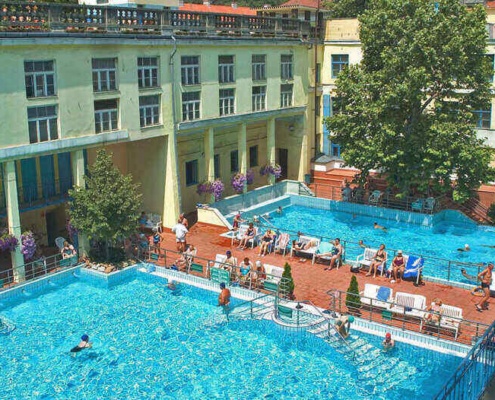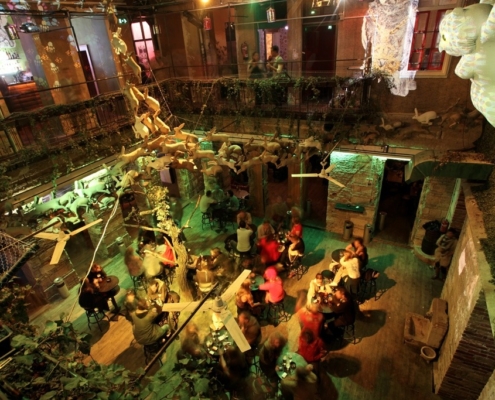Exploring Art Nouveau in Budapest: A Journey Through Stunning Architecture
In Hungary, the term Secessio (Latin for “separation” or “withdrawal”) became synonymous with a movement in the late 19th century where artists, disillusioned by the lifeless imitation of historical styles, sought to create something fresh, organic, and original. This desire for newness sparked the birth of Art Nouveau, which found its boldest pioneers across Europe, from Antoni Gaudí in Barcelona to Charles Rennie Mackintosh in Glasgow. In Central Europe, architects drew inspiration from German Jugendstil, French Art Nouveau, and English Liberty styles while embracing Hungarian folk motifs.
The second half of the 19th century they have marked a period of immense transformation. Rapid technological advancements, industrialization, urbanization, and the growth of large cities all contributed to a burgeoning need for new public buildings. Train stations, market halls, hospitals, and museums were constructed in various ornate, decorative styles that captivated the public. While often disconnected from their actual function, these buildings were designed to make a statement through their stunning facades.
The appearance of Art Nouveau in Budapest was an organic process, which added dynamism and creativity to its architectural landscape. Today, these masterpieces are spread across the city, standing as proud symbols of Budapest’s rich artistic heritage.
This self-guided journey through the city will introduce you to some of the most stunning examples of Art Nouveau in Budapest. Follow the route and immerse yourself in the beauty of this unique architectural style!
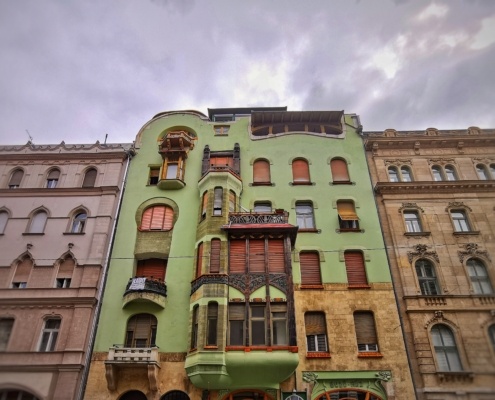
House of Hungarian Art Nouveau in Budapest (Bedő-ház)
5-minute walk from the Parliament
Address: Honvéd utca 3
Architect: Emil Vidor
Start your Art Nouveau journey at the Hungarian House of Art Nouveau, a charming museum and café dedicated to Hungarian Art Nouveau design. The building’s façade features an asymmetrical design, varied window shapes, and rich decorative elements that reflect Hungarian motifs created by the renowned Zsolnay factory. The museum showcases a fascinating collection of Art Nouveau furniture, decorative arts, and architectural models, offering insight into this artistic revolution. Sadly, the Bedő House has been closed since 2020, but Szabadság tér still has many remarkable Art Nouveau buildings for you to discover.
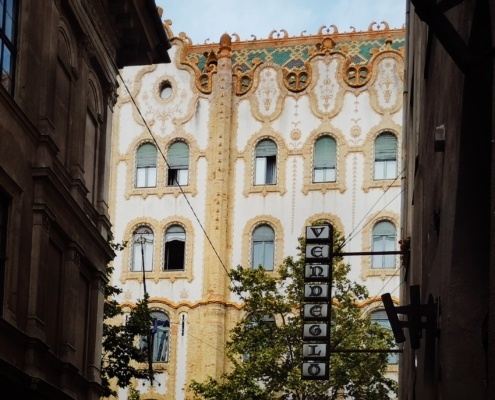
Former Royal Postal Savings Bank Building
Near the US Embassy
Address: Hold utca 4
Architect: Ödön Lechner
Next, head to the Former Royal Postal Savings Bank, designed by Ödön Lechner. While its structure is simple, the building’s intricately decorated façade and rooftop are anything but. Lechner worked with the Zsolnay factory to adorn the building with colorful ceramics that symbolize financial prudence. Look for motifs like bees climbing pilasters toward beehives, vibrant Hungarian folk flowers, and mythical creatures such as dragons and serpents that represent the volatility of money. Once a bank, the building now houses the Hungarian State Treasury, and although the narrow street limits your view of the rooftop, this Art Nouveau treasure is not to be missed.
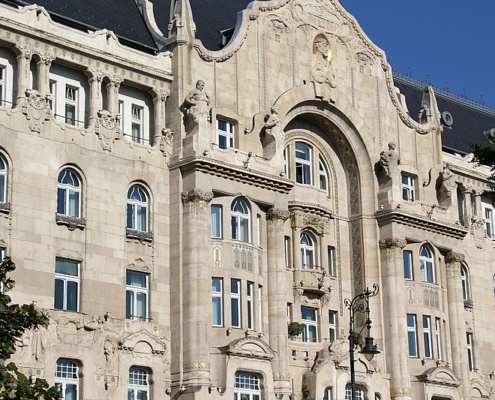
Gresham Palace
Opposite the Chain Bridge, now the Four Seasons Hotel
Address: Széchenyi István tér 5-6
Architects: Zsigmond Quittner and József Vágó
Gresham Palace is a grand Art Nouveau masterpiece, completed in 1906. Positioned directly opposite the Chain Bridge, it was originally built for an English insurance company. Today, it serves as the luxurious Four Seasons Hotel, where visitors can admire its Secession-style interiors on the ground floor. The building remains one of the most impressive examples of Art Nouveau in Europe, combining opulence with intricate craftsmanship.
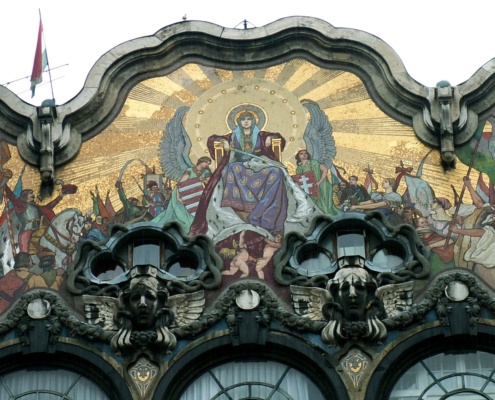
Turkish Bank House
8-minute walk from St. Stephen’s Basilica, near Váci utca
Address: Szervita tér 5
Architect: Lajta Béla
Don’t miss the stunning Turkish Bank House, a beautiful blend of Art Nouveau and national pride. The building features the captivating mosaic “Patrona Hungariae,” which portrays Hungary as a graceful woman surrounded by key historical figures. Designed by Lajta Béla, the structure showcases a mix of folk-inspired motifs and modern architectural materials. The Turkish Bank House stands as a tribute to Hungary’s rich cultural heritage and its architectural evolution.
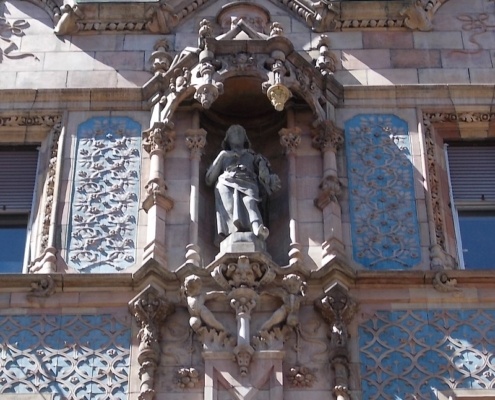
Thonet House
Look up as you stroll down Váci utca!
Address: Váci utca 11
Architect: Ödön Lechner
The Thonet House is one of Budapest’s hidden Art Nouveau gems. Designed by Ödön Lechner in 1889-1890 for the Thonet family, famous for their furniture, this building features a colorful majolica-tiled façade, a hallmark of Lechner’s work. The façade blends Gothic and Renaissance details with organic forms typical of Art Nouveau, creating a sense of fluidity and lightness. As you explore, you’ll spot decorative “T” motifs, a subtle nod to the Thonet brothers. The Thonet House perfectly captures the charm of late 19th-century Budapest, merging function with artistic flair.
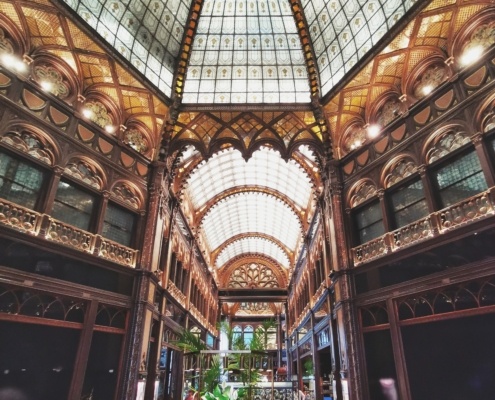
Paris Udvar Hotel (Párizsi Udvar)
Gothic and Moorish elements combined with Art Nouveau
Address: Ferenciek tere 10
Architect: Henrik Schmahl
The Párizsi Udvar, completed in 1913, is a stunning fusion of Gothic, Moorish, and Art Nouveau styles. Located near the first Elizabeth Bridge, the building blends Venetian Moorish Byzantine flair with intricate craftsmanship. Recently restored, the building is now part of the Parisi Udvar Hotel, where visitors can marvel at its opulent arcade, complete with glass ceilings and lavish ceramic decorations. It’s an architectural wonder that offers a glimpse into Budapest’s eclectic beauty.
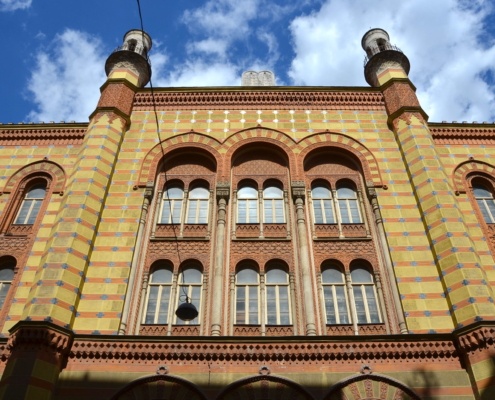
Rumbach Street Synagogue
15-minute walk from Paris Udvar Hotel, 2 minutes from the Dohány Street Grand Synagogue
Address: Rumbach Sebestyén utca 13
Architect: Otto Wagner
Designed by Otto Wagner, the Rumbach Street Synagogue is a must-see for anyone interested in Art Nouveau architecture. The building’s minaret-like towers and octagonal layout draw inspiration from both Spanish Alhambra and Jerusalem’s Dome of the Rock. It seamlessly blends Eastern and Western architectural influences, making it a significant piece of Budapest’s architectural heritage. If you want to discover the beautiful interior of this building, you can join a private Jewish District Tour.
Kazinczy Street Synagogue
Located in the Jewish District, 8-minute walk from Dohány Street Grand Synagogue
Address: Kazinczy utca 29-31
Architect: Béla Lajta
This hidden Art Nouveau gem is one of Budapest’s finest examples of architectural beauty. The synagogue’s interior features stunning stained glass windows, Transylvanian wood-carved motifs, and luxurious Zsolnay porcelain inlays. The exterior, with its Torah inscription and delicate leaf-patterned ornamentation, is understated yet elegant. It captures the essence of Budapest’s Art Nouveau charm, blending cultural significance with architectural brilliance.
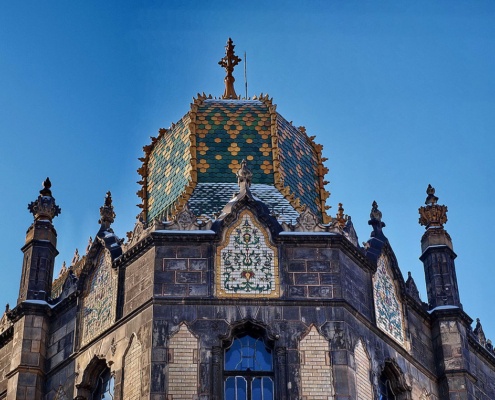
Museum of Applied Arts
Address: Üllői út 33-37
Architects: Ödön Lechner and Gyula Pártos
We had hoped to include the Museum of Applied Arts on this list, but for the past nine years, this iconic museum has been in a state of limbo due to financial constraints. Designed by Ödön Lechner, this masterpiece of Hungarian Art Nouveau has been closed, with its much-anticipated renovation halted mid-way. The stunning façade, featuring colorful Zsolnay tiles and intricate details, continues to capture the imagination of passersby, though the prolonged delays in its restoration raise concerns about preserving Hungary’s architectural heritage. Many hope that renewed funding will breathe new life into this exceptional piece of Budapest’s artistic legacy.
For More Art Nouveau in Budapest Join Our Daily Free Tours!
If you want to learn even more about Art Nouveau in Budapest, join our free walking tours! Our tours pass by several of these iconic structures, and you’ll have the chance to hear fascinating stories about the history and significance of this architectural style. Our knowledgeable guides will bring the beauty of Budapest’s Art Nouveau to life, and you’ll gain deeper insights into the city’s artistic heritage while exploring its charming streets. Whether you’re a traveler keen on architecture or an art lover, Budapest’s Art Nouveau gems offer a truly unique experience.

